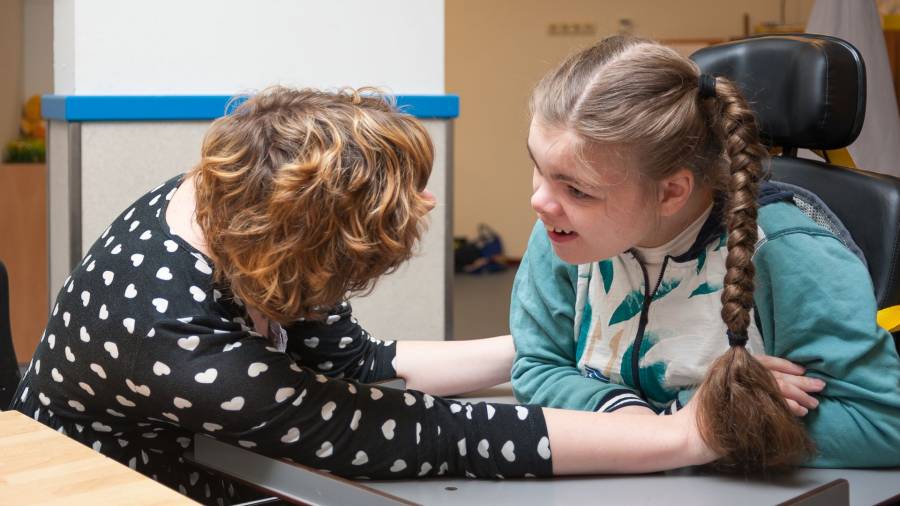Partnership solutions in troubled times
Organisations are all in the same boat when it comes to the challenges posed by COVID-19 – collaboration is key to weathering the storm

STRATEGY
Image: Istock
Maggie Rafalowicz
Director, Campbell Tickell


Greg Campbell
Partner, Campbell Tickell
There have been many striking features of the ways that people have responded to the COVID-19 pandemic, in the UK and elsewhere. Central to these has been a willingness to pull together – a recognition that we are all in the same, or at least a similar boat, and we face common challenges. This has given a major boost to the principle of partnership working. So, what does this mean as we emerge from lockdown?
Partnership and mutual recognition of course take many forms. Just some examples include:
- volunteering to help with a variety of efforts involving homelessness or health-related or other charitable causes and mutual aid groups that have sprung up around the country;
- the Thursday evening public applause for healthcare and other key workers;
- the proposal by the G15 group of large London housing associations for 100,000 ‘Homes for Heroes’, as well as many more initiatives.
Virtual collaboration
In mid-March, Campbell Tickell set up a WhatsApp group for housing chief executives across the UK and Ireland. Similar groups have emerged for NHS trust CEOs and others. The Campbell Tickell WhatsApp group has swelled to 220 CEOs, ranging from many of the largest housing providers to relatively small organisations, as well as specialist care and support providers and homelessness agencies.
The discussions have been characterised by a willingness to share and help each other. This has included joint bulk procurement of hand sanitiser, sourcing of accommodation for victims of domestic violence, and extensive sharing of model documents and publications. This latter point has included:
- policies and procedures for voids management in the pandemic;
- how to carry out virtual sign-ups of new tenants;
- compliance checklists;
- updating videos aimed at residents or staff.
The sharing has not been confined to group members, but has highlighted a number of instances of effective joint working. For instance with local authorities on arranging accommodation for homeless people; providing support for local care homes and charities with deliveries of food and other supplies; and different forms of support to health trusts and hospitals.
Sharing post-COVID-19
Sooner or later, we will get to a point where this pandemic is behind us, or we will at least have embedded ways to cope with it for the longer term. Will the current learning and approaches to partnership working persist for the long term? Plainly one must hope so.
There is no reason why organisations should not work together, and not merely within their immediate operating spheres. It makes absolute sense to bring together councils, housing associations, health and care providers, charities, local businesses and others in joint endeavours.
This isn’t new, of course. Housing associations have been operating development partnerships for more than 15 years, collaborating in the area where traditionally they have been most competitive.
“Will the current learning and approaches to partnership working persist for the long term? Plainly one must hope so”
There are also various well-established joint procurement initiatives, some regional, such as Advantage South West, others national, such as Fusion 21. And as there has been growing focus on the government’s devolution agenda, such as combined authorities. This has resulted in corresponding relevant bodies working in similar geographies, such as the Greater Manchester Housing Providers or Build East, springing up.
Local authority evolution
The emergence of combined local authorities is just one part of the changes in local government. At sub-regional level, we have seen both council mergers such as Bournemouth, Christchurch & Poole, and significant joint working through combined structures reporting to dual councils, such as Broadland and South Norfolk, Babergh and Mid-Suffolk, or Richmond and Kingston.
It is clear that this drive for joint working is not going away any time soon. Apart from anything else, scarcity of financial and other resources will foster it further. And in the housing sector, this is likely to lead to more mergers and group structures. Not least as organisations become used to working with one another and can see possible financial and other benefits through combining to increase capacity and viability in the face of tough financial challenges.
Greater than the sum of your parts
Whatever form it takes though, partnership working doesn’t come easily, or perhaps even naturally. It requires aligning one’s goals, plans and strategy – and one’s operations – with another organisation. It requires appreciating that partnership and collaboration are not a one-way process, but must involve mutual benefit. And that in turn requires focus and commitment, most critically from the top: leaders need to argue the case and demonstrate why partnership is in the interests of their organisation and central to delivering its key objectives.


